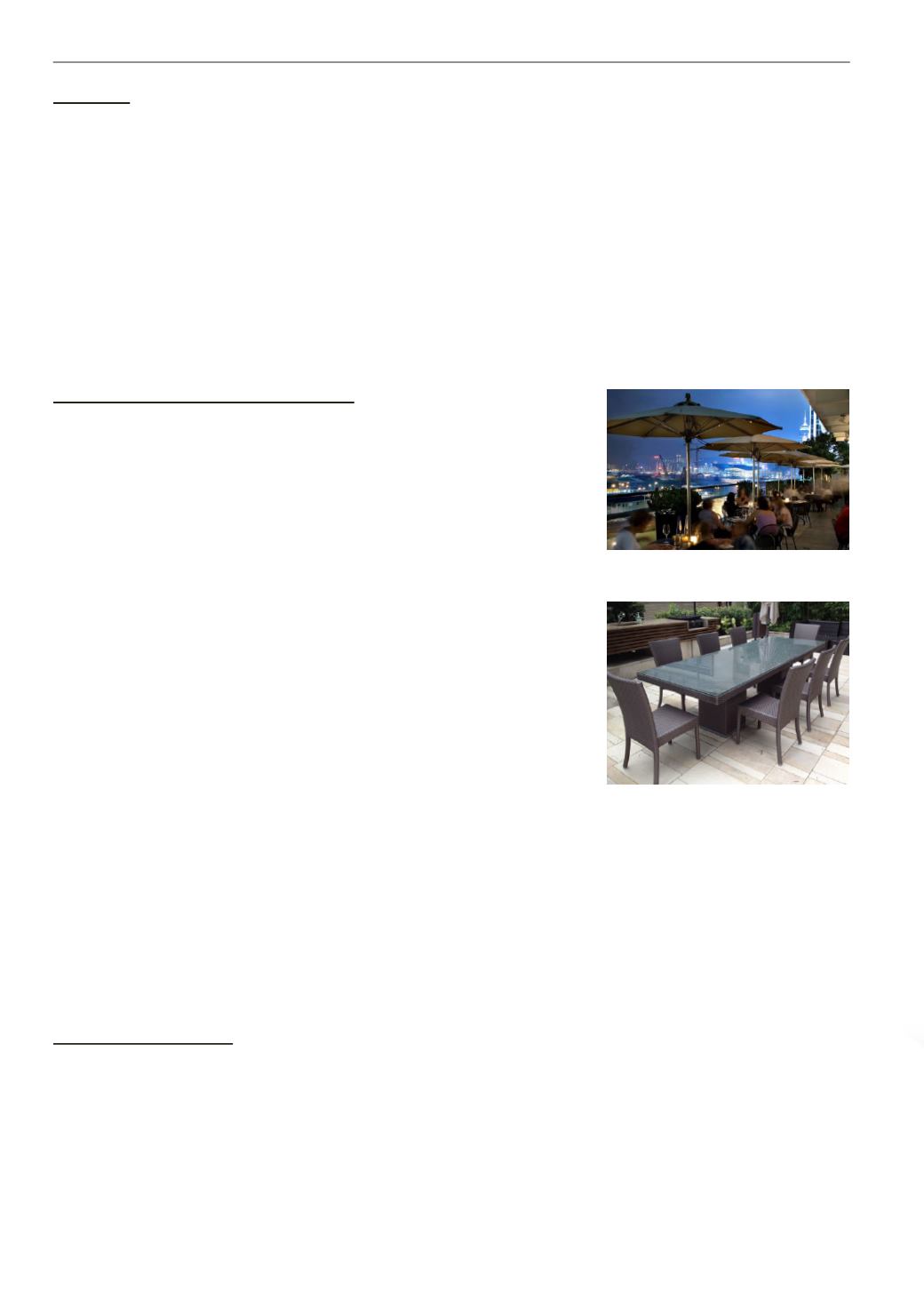
A. Lighting
Lighting of restaurants and food courts is for functional purposes as well as for decoration. It is important to consider the
following:
• Use of more natural daylight by the introduction of skylights or large windows – reduce reliance on artificial lighting and
associated energy use.
• Zoning of lighting for different usage.
• Provide staff with the ability to control lighting. Install dimmers to help adjust lighting levels so that lighting levels can be
reduced as appropriate.
• Install motion sensors for lights where appropriate, such as in store rooms and restrooms.
• Regular cleaning of light fittings.
• Higher reflectance of walls, ceiling and floor if possible.
• LED exit signs.
• Energy efficient lighting (e.g. compact fluorescent lamp
, T5 tube, LED, etc).
B. Ventilation, heating and air-conditioning
In restaurants and food courts the design and use of natural ventilation, mechanical
ventilation, air-conditioning and heating will affect energy use and cost of operation
of the restaurant and food court. It is important to consider the following:
• Adequate air pollution control facilities and air ducting for the restaurants
should be planned and centrally provided during construction and renovation of
shopping centres.
• Consider natural ventilation or hybrid ventilation where possible.
• Provide outdoor seating where appropriate and permitted. An outdoor seating
area will have fresh air and natural ventilation without the need for air-
conditioning.
• Use ceiling fans to circulate air and reduce reliance on air-conditioning.
• Where windows or glazed areas are provided, use
for better
insulation to reduce heat and cool loading for the air-conditioning.
• Use an energy efficient air-conditioning system.
• Zone air-conditioning systems to serve different usage.
• Divide hot and cool zones inside kitchen areas to save air-conditioning energy.
• Use a heat exchanger.
• Furnace to be tuned and filters to be replaced regularly.
• Provide sub-meters to monitor use of electricity for different usage.
• Provide positive pressurisation in dining areas to prevent infiltration of exterior
hot air and pollutants where restaurants are connected directly to the outside.
• Install occupancy sensors where people seldom go (e.g. store rooms).
• Good insulation of pipes.
• Use a refrigerant with an
(ODP) of zero or
(GWP) of less than 100.
• If a cooling tower is used, comply with the Code of Practice for Prevention of Legionnaires’ Disease and Code of
Practice for Water-cooled Air Conditioning Systems.
• Use solar film.
• Good insulation of pipes and air ducting.
C. Operational measures:
Green measures in the operation of restaurants and food courts can also help to reduce energy use and save on costs.
The following considerations are important:
• Keep cooking equipment clean. Carbon and grease build-up will reduce cooking equipment’s energy efficiency.
• Cover pots to reduce heat loss and help to cook food faster.
• Schedule cooking times to utilise ovens, steamers and fryers fully, which will help to minimise daily operating hours of
cooking equipment.
Figure 160 Outdoor furniture for
outside sitting area
(Source: Kai Shing Management
Services Limited)
Figure 159 Outdoor sitting area of a
restaurant in ifc mall, Central
9
Special topics
9.1
Restaurants and food courts
182 Hong Kong Green Shop Guide


